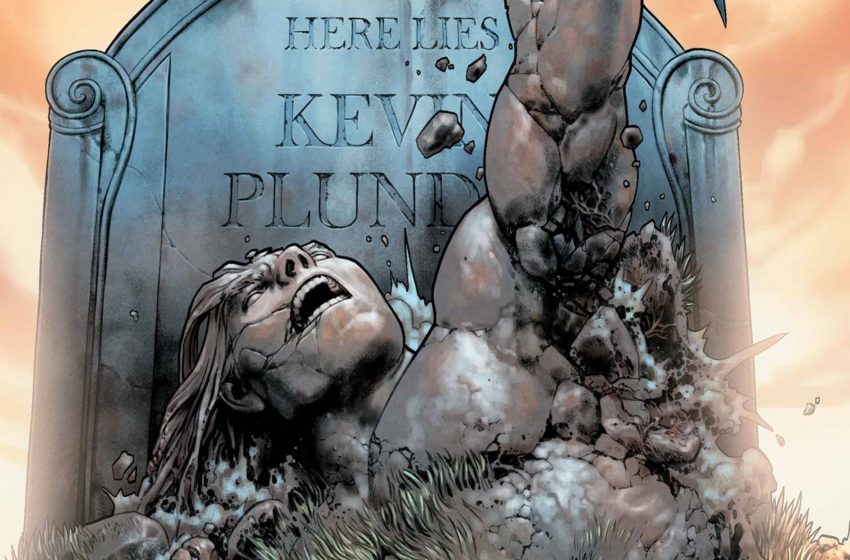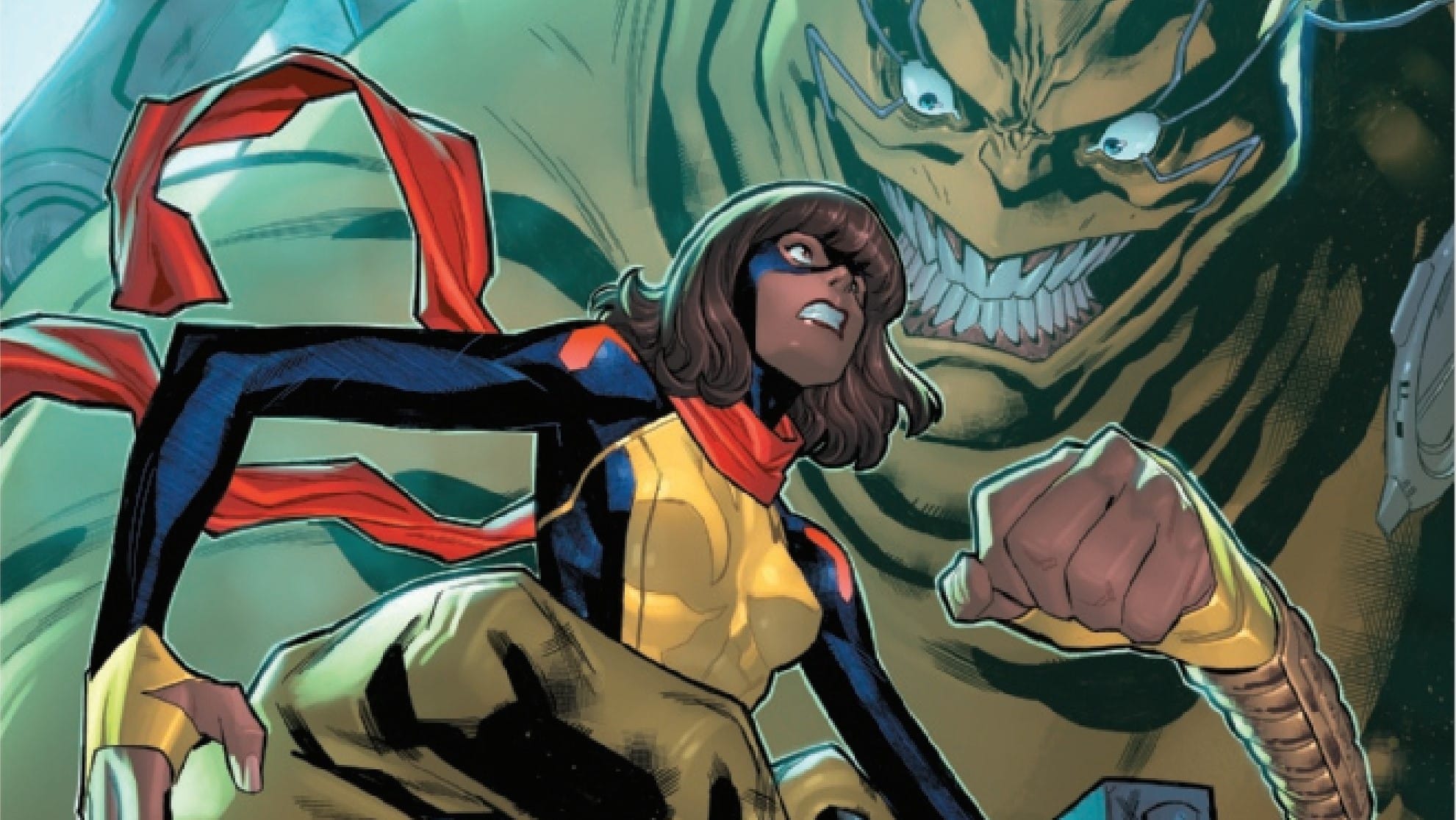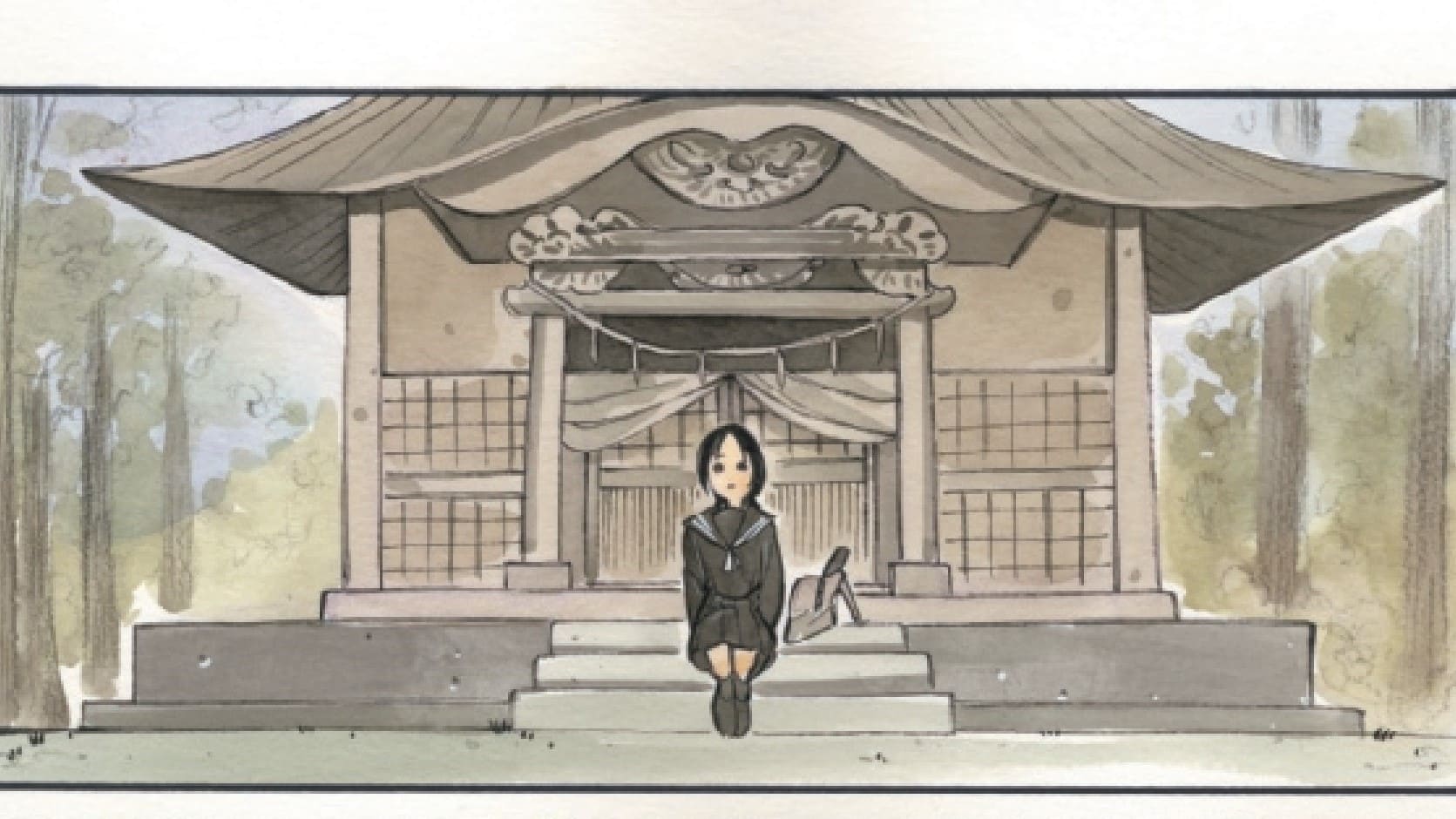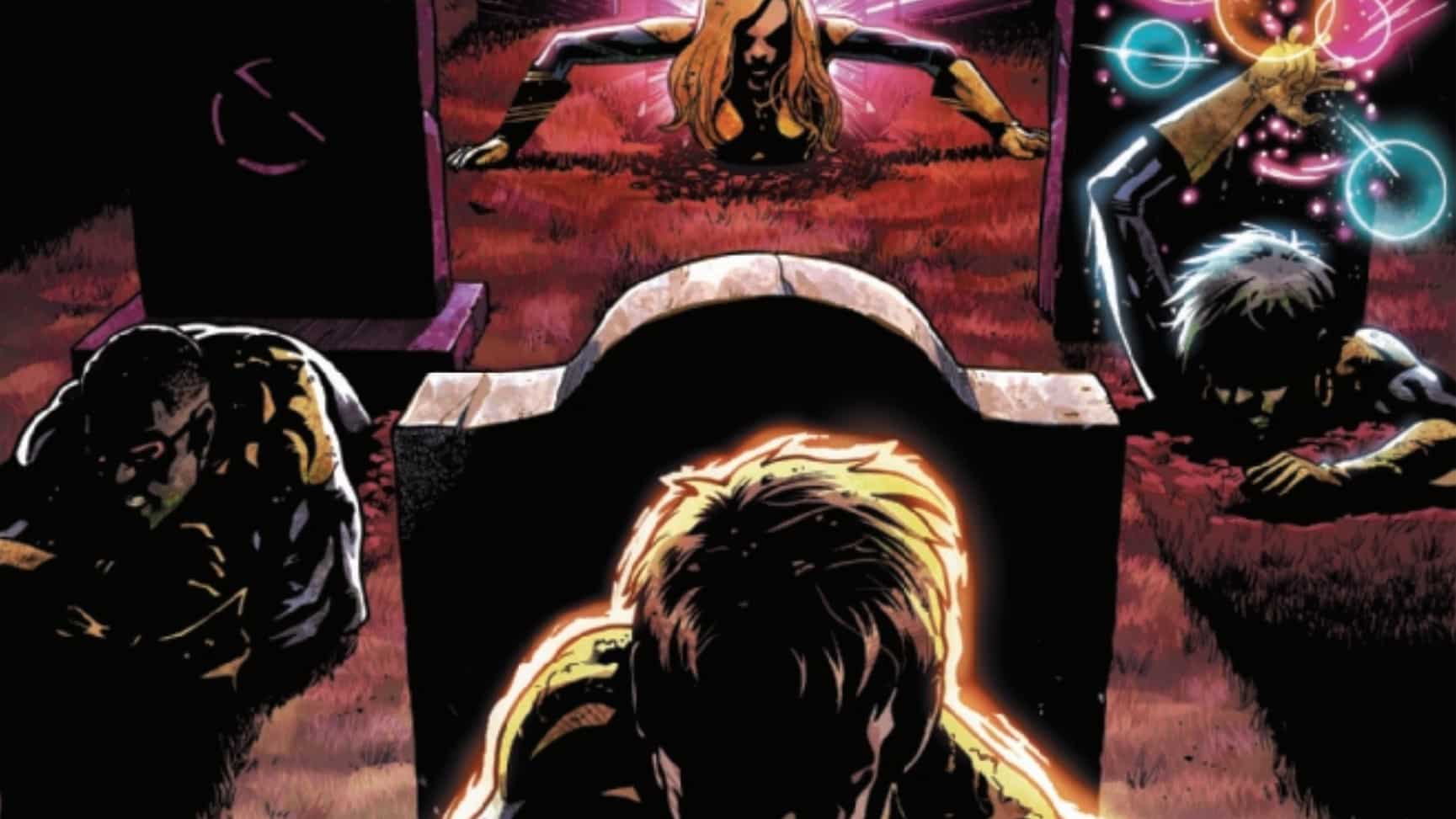The Savage Land, a land that time forgot. A region of Antarctica filled with prehistoric beasts and tribes, undisturbed for millennia. It is protected by Ka-Zar and Shanna the She-Devil, outsiders who have become reborn in the soil of the realm. But something is wicked in this garden of Eden as Zac Thompson, Germán García, Matheus Lopes and Joe Caramagna explore Ka-Zar: Lord of the Savage Land #1.
Zachary Jenkins: It may be the ongoing climate crisis or it may be that plants are pretty neat, but I can’t help but feel like ecological horror has become incredibly fertile ground recently. You’re a biologist by trade, Chris. Do plants scare you?
Chris Eddleman: Plants are both delightful and terrifying in equal measure. They are in many ways reminders of how living things irrevocably shift and change their environments. In these turbulent times, people tend to think of humans as this incredibly destructive force, and they definitely should. However, many species throughout history have changed the world in much the same way we have. And honestly, photosynthesizers are chief among them. We exist in a world where every living thing has adapted to breathing poison, the destructive compound O2. It’s ultimately that which kills us, through the effects of oxidative damage, but also what’s enabled the diversity of life we’ve seen in the eons of existence of Earth. And it’s all thanks to lovely photosynthesizers. Plus they have cell walls. What the hell is up with that?
The Coyote Gospel

Zachary: To talk about Ka-Zar, we are going to have to talk about Tarzan. Tarzan has its roots in pulp legend Edgar Rice Burroughs’ take on a wild man in “darkest Africa.” It’s a white boy, raised by apes to be the Lord of the Jungle, the white savior of the rainforest. It’s roots are in racist depictions of a continent and white savior tropes. Now, Ka-Zar has his roots in Martin Goodman shamelessly ripping off Tarzan three years before Marvel Comics #1, with Jack Kirby and Stan Lee reinventing the character 25 years later in X-Men #10. But they added the dinosaurs, which is neat. Chris, do you have any connection to Ka-Zar or Tarzan?
Chris: I honestly don’t, really. I’m a big fan of Zac Thompson’s ecological oeuvre, which was what brought me to this story, with the promise of talk of biological systems and man’s relationship to nature. Tarzan is pure pulp, and Ka-Zar in many ways feels like a relic of such an earlier age. It was slightly jarring for me to see him randomly show up fighting aliens in 2020.
Zachary: The challenges with this character are something Thompson understands and directly addresses within the opening pages. Ka-Zar was brought to the Savage Land by men with colonial intentions, and now wrestles with the truth that he is a stranger in a strange land. The added wrinkle to this is that, last time he appeared, Ka-Zar both died and was reborn by the Savage Land, something that had previously happened to his wife, Shanna.
This has given both of them a deeper connection to the world, one that expresses itself in unique powers for the couple. Shanna is bonded to the flora and Ka-Zar the fauna. It’s hard not to draw comparisons to Grant Morrison and Chas Truog’s Animal Man. This goes beyond the superficial comparison, like how Ka-Zar has Animal Man powers but for dinosaurs now. Instead, it places Ka-Zar in a similar place as Buddy Baker in that seminal run. He lives in a sense of malaise, unsure of his place in the world and struggling to connect with his growing son. Do you think Thompson did enough to differentiate this issue from something like Animal Man?
Chris: So as you stated, it’s pretty obvious that there are some clear parallels to Animal Man. Parallels might even be putting it mildly. However, I think where this comic is trying to differentiate itself from Animal Man is the setting. I feel like it’s difficult to divorce Animal Man from its suburban trappings, in which a man is trying to relate to nature while living in a house surrounded by a white picket fence. Even though the nuclear family dynamic exists in Ka-Zar, they’re very much existing within their setting of the fantastic Savage Land. It’s not unlike Animal Man meets Swiss Family Robinson, at least in terms of feel. I think that’s probably an ultimately lazy way to put it, though, which is why I’m glad we do these long discussions.
So if possible, I’d like to discuss Ka-Zar and Shanna moving away from using animal products. Classically, these characters and their like are always clad in fur or animal skins. Again, this felt odd and out of place in 2020, but apparently in 2021 we’re moving away from animal products as Shanna has constructed (I guess from her powers?) a bacterially grown suit for Ka-Zar to wear. There’s also a bit later where Ka-Zar and Shanna remind their son, Matthew, that since they have the option to only eat vegetable matter, that that’s what they’ll do as good stewards of the Savage Land. I’m wondering if the white protagonists assigning a moral value to vegetarianism is going to be explored further. I think this kind of thinking in real life can be a bit of a trap, as hunter gatherer societies ate meat successfully for tens of thousands of years without the irreparable damage that factory farming has caused. But we’ll see. It makes some amount of sense given Ka-Zar’s new powers but not Shanna’s, right? I’m probably digging too far into this.
Zachary: It’s an interesting question because from a pure ecological lens, the issues with carnivorous lifestyles come from the industrial scale of factory farms. There’s a separate lens that asks if it is moral to kill something and eat it if you have other options, which I think this book is more interested in investigating. Like Grant Morrison making Buddy a vegetarian in Animal Man, Thompson, a proud vegan, is instilling that in Ka-Zar. With the growth of his powers, it makes sense that Ka-Zar would be apprehensive about taking the life of a being when Shanna can grow all the dinner they need.
I think what makes this work for me is that Ka-Zar is chastising his son and not, for example, one of the Sun People of the Savage Land. We’re both parents, and we both exert control over our children’s diet. It’s one thing to push your values on other cultures, it’s another to do it to your children.
Preludes & Nocturnes

Zachary: One of the biggest benefits this title has is the jaw-dropping work of artists Germán García and Matheus Lopes. While García’s character models feel grounded and sharp, there’s a hyper-real, almost dreamlike quality to the art. Lopes’ colors are soft and lush, the calming tones adding an almost sinister sense of unease to the proceedings as we wait for something darker to happen. Now, Chris, I know you constantly want to talk to somebody about dinosaurs. Would you like to talk about the dinosaurs?
Chris: I have some thoughts on these dinosaurs, both from a realistic and an artistic presentation. Now, in general, these dinos may look unrealistic due to their chunkiness. And maybe that’s the case, but we do only mostly have dinosaur skeletons to look at, so maybe they were poofier than we realize. That being said, though, no feathers on the T. rex, so that’s a 0/5.
Honestly, I’m kidding. I don’t expect a huge amount of realism from my comic book art, and I think it’s silly to say otherwise unless it doesn’t vibe with the comic’s presentation as a whole. The dinosaurs meshed perfectly well with the fantastic quality this comic brings. It kind of feels like an old Hanna-Barbera cartoon, but with the quality upped 100x. I think García brings a kind of ethereal quality to this art where the realism seems mainly through a layer of gauzy fantasy. But honestly, Lopes’ colors are so unlike what we normally see in a superhero book with the bright palette. It makes this feel like really something special.
Zachary: I love how Lopes’ colors set your mind up for something calming and beautiful. It makes the moments of horror even more impactful. It washes over you until you realize you have been trapped by the glow of the art, unprepared for the grotesque just around the corner.
Seed of Destruction

Zachary: I mentioned above the colonial legacy of the character, how Kevin Plunder is an invasive species in the Savage Land, and I mention this because Thompson is approaching the idea of invasive species in several ways here. Chris, you know this topic more than I, could you give our readers a quick overview of what an invasive species is and its long ties to colonialism?
Chris: So my main connection to this comic is its delving into of invasive species, so I’d be thrilled to get into that. To put things simply, an invasive species is one brought out of what would be considered its natural habitat to a new habitat. After this process occurs, you usually get three outcomes. One, the species simply can’t make it in its new habitat and dies. Two, the species is well suited or adapts to its new habitat, but without making too much of a change to its surroundings. We consider these species to be “naturalized.” The third option is that the species is TOO good at existing in its new environment and starts to crowd out the other species and ends up adversely affecting the ecosystem. These are the invasive species. Examples in the United States (relevant to me, a person very concerned with invasives) include bush honeysuckle, kudzu (the weed that ate the South), Asian carp and house cats (tough but fair, they murder so many birds).
The issue with invasive species is mainly the destruction they cause to their new environment, but of course very few of them these days simply moved to their new ecosystem via happenstance. Nearly all of them are the result of some form of human intervention, usually in the form of colonialism. When Europeans colonized and displaced Native Americans, they also brought their own trees and turf grasses, hoping to emulate the estates of Europe. This has ultimately caused irreparable harm to the ecosystem of the entire continent. This is only a single example, but it’s happened so much that the ecosystem that Americans currently live in is so different from pre-Columbian times that we likely wouldn’t recognize how it all looked originally.
Anyway, it’s interesting to see this issue delved into in the form of scary T-rex bad guys. Comics love to make aliens the invasive species a bunch, since it then becomes some cosmic force that is well suited to superhero narratives.
Of interest to me is Ka-Zar and his family also being somewhat of an introduced species, as none of them is native to the Savage Land but have taken on the mantle of its protectors. We’ll see if this series delves into the difference between a naturalized species and an invasive one, but I think Thompson and García are portraying that interestingly from jump.
Zachary: To really hammer home the point, this issue reveals that another form of invasion is in the land. Some technological presence called Polyscion had invaded, slowly converting the biological to the electrical. Industry touching the last pure places on this Earth, likely for profit. We don’t get much more in this issue, but it’s planting the seeds for something special to come.







